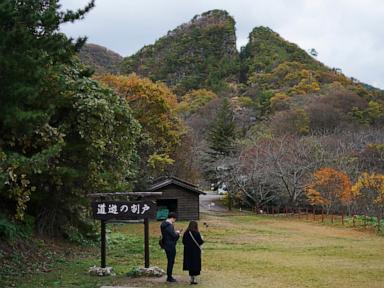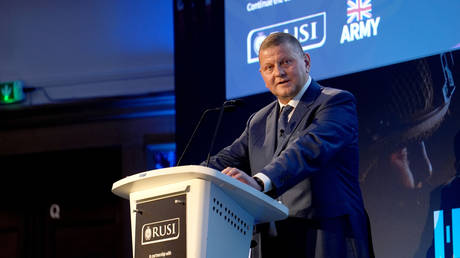ARTICLE AD BOX
ISRAEL is destroying Iran’s “ring of fire” by launching its long-awaited ground invasion against Hezbollah fanatics in Lebanon, a former Israeli Major said.
Ahron Bregman, who served in the Israeli military for six years, told The Sun that “all eyes” are on Iran after the IDF launched Operation ‘Northern Arrows’ against the Tehran puppets.
 Reuters
Reuters EPA
EPA Iranian supreme leader, Supreme Leader Ayatollah Ali Khamenei pictured in Tehran earlier in SeptemberAP
Iranian supreme leader, Supreme Leader Ayatollah Ali Khamenei pictured in Tehran earlier in SeptemberAP AFP
AFP
Dr Bregman, now a senior teaching fellow at King’s College London, said the Israelis are destroying Hezbollah and Tehran’s “ring of fire”.
For years, Israel has been facing a seven-front war with Iranian-funded forces causing havoc from Lebanon, Yemen, Iraq, Syria, the Gaza Strip and the West Bank as well as Iran itself.
Dr Bregman told The Sun: “All eyes are on Iran. They face a massive strategic decision about what to do next.
“The Israelis are shredding Iran’s most important proxy.
“Iran tried to build a circle of fire around Israel and the circle of fire is falling apart.
“Iran’s big strategy, the big ideas and big plan is destroyed.”
Dr Bregman, who fought in the 1982 Lebanon war, added: “Iran will be looking now to see whether Hezbollah does hit back in the Israeli invasion.
“If Hezbollah do, that’s good news for Iran. But the decision is bigger than that for Iran.
“Do they rebuild Hezbollah or do they abandon it? Or do they attack Israel directly because Israel is destroying Iran’s most important ally and proxy in the Middle East.”
 AP
AP AFP
AFP EPA
EPADr Bregman said he believes Iran will hesitate before directly striking Israel now that Hezbollah are on the run.
He said: “If Iran does strike, Tehran know that the Israelis could attack their oil refineries and nuclear facilities.
“Iran knows this, so it’s a massive strategic decision on what to do next.”
Israel has since vowed to “crush Hezbollah” in a chilling statement hours after launching its long-awaited ground offensive.
Defending Israel’s position, National Security Minister Itamar Ben Gvir called for continued operations to “crush the terrorist organization” to allow residents who have fled Northern Israel to return home safely.
He said: “The decisions we made in the last few days are important, correct and necessary.
“At the same time, this is the time not to stop, [we must] continue doing everything, with all our might.
“I pray for the success of the IDF soldiers who are currently fighting in difficult conditions in southern Lebanon; the people of Israel stand behind them.”
It comes as…
- Elite IDF paratrooper & commando units launch ground invasion in Lebanon
- ‘Fierce’ clashes erupt between IDF troops and Hezbollah terrorists
- Israel declares no-go zone for Lebanese civilians south of the Litani River
- Israeli jets launch airstrikes on Beirut and southern towns in Lebanon
- Israel vows to ‘crush Hezbollah’ after launching ‘Northern Arrows’ invasion
- Hezbollah fanatics launch retaliatory rocket strikes against Tel Aviv
- UK Government charters emergency flight out of Lebanon for fleeing Brits
Today, 25,000 Israeli troops intensified their ground campaign in southern Lebanon to destroy Hezbollah rocket sites.
Israeli commanders stated that the assault would be “limited, localised, and targeted” and would not include an occupation.
However, fighting escalated throughout the night, with Hezbollah unleashing rocket and artillery barrages at Israeli troops massing on the border.
Terrorists launched rocket and artillery attacks on Metula, an Israeli border town, in response to the onslaught.
Netanyahu’s men will also will face up to 50,000 Hezbollah fighters and their network of terror tunnels as the terrorists are stacked up with guns, ammunition and thousands of rockets underground.
Commanders have ordered in a force around twice the size of the last Israeli invasion which withdrew after around a month in 2006.
The IDF said it would not allow another “October 7-style invasion” to happen accusing the terror group of planning to use villages near the border for an attack on Israeli homes.
IDF spokesperson Daniel Hagari said “Hezbollah turned Lebanese villages next to Israeli villages into military bases already for an attack on Israel.
“Hezbollah had planned “to invade Israel, attack Israeli communities and massacre innocent men, women and children. They called this plan, ‘Conquer the Galilee.’
“We will not let the 7th of October happen again on any one of our borders.”
 AP
AP
The IDF's Analysis of Hezbollah
by Juliana Cruz Lima, Foreign News Reporter
AN analysis by the Israel Defense Forces (IDF) said that Hezbollah, under the leadership of Hassan Nasrallah, has evolved into a well-armed terrorist organisation, presenting a significant threat to Israeli security.
With strong backing from Iran, Hezbollah’s military capabilities and strategic positioning in Lebanon continue to shape the region’s security dynamics.
Military Strength and Sophisticated Armaments: The IDF assesses that Hezbollah maintains a robust military force with 20,000-25,000 full-time fighters, supported by tens of thousands of reserves.
The organisation’s elite Radwan Unit, trained and equipped by Iran’s Quds Force, is noted for its expertise in conducting operations against Israel, including potential incursions into Israeli territory.
Hezbollah’s vast arsenal consists of over 150,000 rockets and missiles, making it one of the most heavily armed non-state actors globally.
Its weaponry, including Iranian-made Fajr-5 and Zelzal-2 rockets, has the capability to strike deep into Israeli territory, posing a direct and immediate threat.
Advanced Warfare Capabilities: The IDF highlights Hezbollah’s advancements in modern warfare, facilitated by Iranian support.
This includes access to advanced anti-ship missiles, anti-tank weapons, and unmanned aerial vehicles (UAVs).
Hezbollah’s ability to target Israeli naval assets was demonstrated during the 2006 conflict, where it effectively used anti-ship missiles.
The organisation’s UAV capabilities, with ranges up to 400 km, are seen as a growing threat to Israeli airspace and ground operations.
Hassan Nasrallah’s Leadership and Strategy: The IDF acknowledges that Nasrallah has been central to Hezbollah’s development from a militia into a hybrid political-military organization.
Since taking leadership in 1992, Nasrallah has focused on expanding Hezbollah’s rocket arsenal and enhancing its military capabilities.
His extremist ideology, particularly his anti-Semitic rhetoric, reinforces Hezbollah’s hostility towards Israel, while his leadership from hiding underlines the constant threat he poses despite his physical absence from public life.
Major Hezbollah Attacks: Hezbollah has been involved in numerous high-profile terrorist attacks, many of which have targeted Israel and Western interests.
The IDF emphasises that, until 9/11, Hezbollah was responsible for more American deaths than any other terrorist organisation.
It is widely recognised as a global terrorist entity by many nations, including the U.S., the UK, Canada, and Israel.
Hezbollah’s Role in Lebanon’s Crisis: Lebanon’s ongoing economic collapse and political instability have created an environment in which Hezbollah wields disproportionate power.
The IDF warns that Hezbollah’s control and influence over Lebanon’s institutions and its military activities continue to threaten regional stability.
Israel-Hezbollah Conflict: The IDF provides a detailed account of Hezbollah’s ongoing military engagement with Israel, most notably during the 2006 Second Lebanon War.
The conflict, sparked by a Hezbollah attack on Israeli soldiers, resulted in the deaths of hundreds of Hezbollah fighters and significant destruction in Lebanon.
Despite this, Hezbollah has since rebuilt its forces and amassed a larger, more sophisticated arsenal, positioning itself as perhaps the most formidable terrorist organisation in the world.
Conclusion: The IDF concludes that Hezbollah, under Nasrallah’s leadership and backed by Iran, represents a major threat to regional security.
Its advanced military capabilities, particularly its extensive rocket and missile arsenal, coupled with its ideological commitment to attacking Israel, make it a key destabilising force in the Middle East.
As Lebanon faces severe internal challenges, Hezbollah’s role will likely continue to influence the region’s security landscape.
.png)
 1 month ago
4
1 month ago
4








 English (US)
English (US)